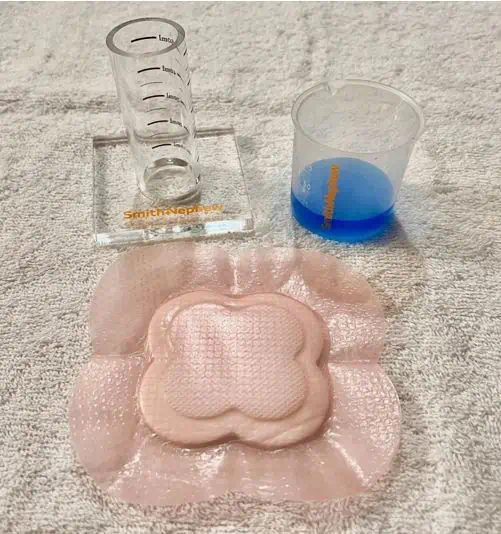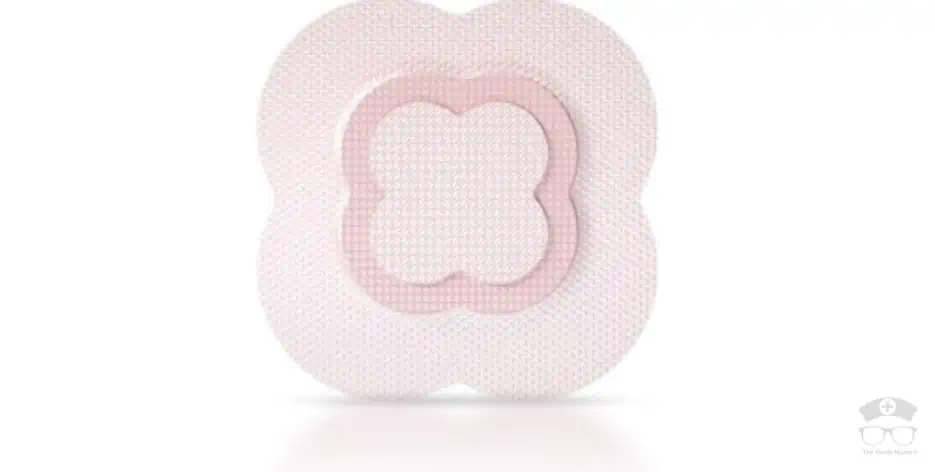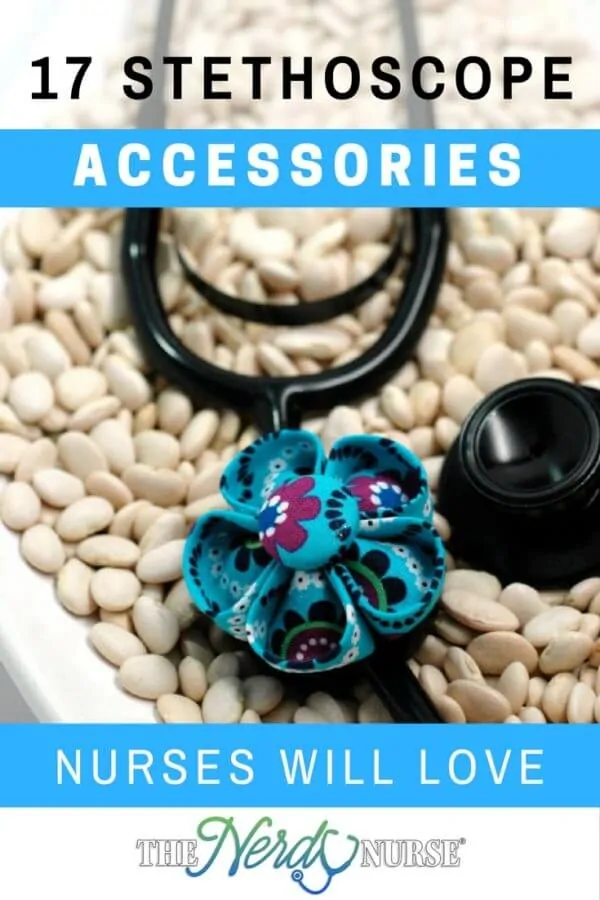This is a sponsored post written by me on behalf of ALLEVYN LIFE from Smith+Nephew. All opinions are 100% mine.
A pressure injury is a serious injury that needs special care. Learn what it is, who’s at risk to get one, how to treat it, and how to prevent them from occurring. We will also discuss Smith+Nephew’s ALLEVYN LIFE Foam Dressing and how it can help in exudate management for pressure injuries.
What is a pressure injury?
A pressure injury is a serious injury that occurs close to the bone and affects nearby muscles. It happens when pressure on the muscle tissue exceeds the tolerance level of the soft tissue.
However, part of the reason this type of pressure injury is so serious is that, unlike a bruise, the signs of the injury are not visible for about 24 – 72 hours after the injury occurs.
To complicate things even more, pressure injuries can deteriorate even under medical care. They have the potential to turn into large, serious wounds with significant tissue loss.
Patients are most likely to have a pressure injury at the heels, buttocks, or sacrum. Pressure injuries may or may not have wound exudate.
In the past, pressure injuries have been called many different names including pressure ulcer, decubitus ulcer, bed sore, and pressure sore. It can also be referred to as a deep tissue injury (DTI).
Pressure Injury Symptoms
Pressure injuries don’t always have broken skin, and they can sometimes be described as a bruise. However, these types of pressure ulcers don’t follow the typical pattern of a bruise.
Common symptoms of pressure injuries include tissue that’s painful before the wound appears and also has a different temperature (cooler or warmer) and consistency (mushy or firm) than the surrounding tissue.
Other symptoms that you may notice include:
- Light-toned skin will present maroon or purple non-blanching skin.
- Dark-toned skin will present discoloration that can be lighter or darker than the surrounding tissue.
- A blister that looks like a blood blister with non-blanching edges and is filled with dark liquid.
- A blister may or may not open up.
- An eschar (hard, blackened surface) may develop, revealing a deep wound when it sloughs or is debrided.
- The injury may heal without breaking the skin, turn into an open wound, or it could remain unchanged (static).
How does a pressure injury happen?
Injuries like these happen with soft tissue is compressed between a hard external surface and a bony prominence for an extended period of time. An example could be lying on the hard floor for a long time after a fall.
The heel is a common location for this type of injury because the bone is relatively close to the skin’s surface. Pressure injuries originate where the soft tissue meets the bone and develop from the inside outwards toward the skin surface.
Who is at risk of a Pressure Injury?
The risk factors for pressure injury include:
- Restricted mobility or immobility
- Poor blood flow due to lung or heart disease
- Diabetes
- Poor nutrition or hydration
- Impaired sensation (such as that from a spinal cord injury)
- Undergoing prolonged surgery
- Incontinence
How do you assess pressure injury?
Assessing a pressure injury is challenging for a couple of reasons. First, it presents days after the injury takes place, so it can be difficult to make the connection between the event that caused the injury and the appearance of symptoms.
Second, once it does become visible, it can present similarly to many other conditions such as a bruise, blood blister, hematoma, incontinence-associated dermatitis, and more.
In order to properly assess this type of injury, perform a:
- Structured formal assessment
- Full pressure ulcer risk assessment
- Skin inspection
- Presence of exudate
- Conduct a structured wound assessment
- Document the assessment
If the diagnosis is unclear, treat the injury as a pressure injury due to the probability of it degenerating into something worse.
Is a bruise a pressure injury?
No, a bruise is a trauma-based contusion that results in small capillaries and veins breaking and bleeding underneath the skin. Bruises have an irregular shape and change colors as they resolve (from purple to green to yellow).
The method of the injury is the key difference. Pressure injuries are the result of prolonged pressure rather than sudden trauma.
What is the best treatment for a pressure injury?
Treatment for pressure injuries focuses on removing the pressure from the injury site since many medical professionals believe that a reduction of the nutrient supply is a cause of the injury.
Treatment includes:
- Caring for comorbidities
- Reposition the patient to offload the pressure from the injury
- Providing good skin care by keeping it dry and clean and covering any open wounds (Smith+Nephew’s ALLEVYN LIFE Foam Dressing)
- Monitor the wound carefully and remove any necrotic tissue
- Manage pain
- Educate the patient, family, and caregivers
Exudate Management
What is Wound Exudate?
According to Medline Plus, “Exudate is fluid that leaks out of blood vessels into nearby tissues. The fluid is made of cells, proteins, and solid materials. Exudate may ooze from cuts or from areas of infection or inflammation. It is also called pus.”
You may also hear this substance referred to as drainage, a wet wound, or other colloquial terms that could be specific to your hospital or unit.
Pressure injuries as well as many other types of wounds can have exudate.
Does Exudate Mean a Wound is Infected?
Wound exudate is a normal and expected component of the healing process. However, certain colors of exudate may be present with infections.
Exudate colors include:
- Serosanguineous: pink-red, thin, normal and non-infected
- Serous: Clear, thin, watery. Non-infected
- Green: Malodorous, sweet-smelling, and thickened. Potential indication of wound infection. Bright blue-green drainage could be indicative of a Pseudomonas infection
- Yellow: yellow drainage that is not slough
- Bloody (red): darker than pink-red and typically fresh post-op or injury
What is Exudate Management?
Exudate management is the process of containing and controlling the amount of drainage a wound produces and is present on the wound. Adequate healing requires the right moisture level. A good dressing will absorb excessive exudate, while still leaving the wound moist.
Smith+Nephew’s ALLEVYN LIFE Foam Dressing:
:

The pink foam dressing from Smith+Nephew is changing the way nurses care for pressure injuries. It is touted in the industry for:
- Strong absorbency (ability to manage exudate)
- Powerful adhesion (it is gently, but strong)
- Exudate retention under pressure
- The need for less frequent dressing changes
- Increased patient comfort
- Increased confidence among nurses
This absorbent foam dressing comes in a variety of shapes/sizes. It can conform to nearly any area on the body (even knees and elbows). The strikethrough indicator is a game-changer at the bedside because it allows nurses quickly see when the dressing is ready to be changed.
The dressing itself is soft and the adhesive is very gentle. All around this increases patient comfort. The strikethrough indicator is a useful addition requiring fewer dressing changes but instead increasing patient comfort. For newer nurses dealing with pressure injuries, the strikethrough indicator is a confidence boost knowing that the dressing is getting changed when it needs to be and the patient is comfortable throughout the process.
ALLEVYN LIFE is easy to identify because the pink color is a strong identifier for the brand. Sometimes nurses refer to the dressing as “the pink one.” Nurses in the know understand that the pink foam dressing is easy to use and great for effective exudate management.
VIDEO:
Potential Complications From Pressure Injuries
Pressure injuries can result in very serious complications for the patient.
Infections are the most common complication. Less serious pressure injuries can cause necrosis. If the injury continues to progress, it can lead to sepsis (blood infection) or osteomyelitis (bone infection).
How do you prevent a pressure injury?
As nurses, we need to minimize complications in patients who already show signs of having pressure injuries. But it’s just as important to reduce the risk of developing pressure injuries in at-risk patients.
Try using these prevention tactics:
- Reposition the patient regularly, taking the person’s activity, ability, and mobility levels into consideration
- Maintain current levels of mobility and activity
- Provide good skin care, keeping the skin dry and clean
- Keep sheets dry and free from wrinkles
- Use redistribution support surfaces to prevent prolonged pressure on bony prominences
- Provide good nutrition
- Manage comorbidities
- Provide good pain management
- Don’t massage bony prominences
- Reduce the risk of shearing by keeping the head of the bed as low as possible
Pressure injuries can be extremely difficult to diagnose correctly and treat. As a nurse, our job is to work to prevent pressure injuries through excellent patient care and managing potential problems for at-risk patients.
More From The Nerdy Nurse
- Why Evidence-Based Practice Is Important in Nursing
- Nursing Care Plans For The Elderly
- Why Is the Nursing Process Important?
- Registered Nurse vs Nurse Practitioner
NOTE: This content, and any modification thereto, is owned in full by the creator engaged to provide services, and no rights or licenses of any kind are transferred. This content may not be used for commercial purposes, published, or distributed without the consent of the copyright owner.





